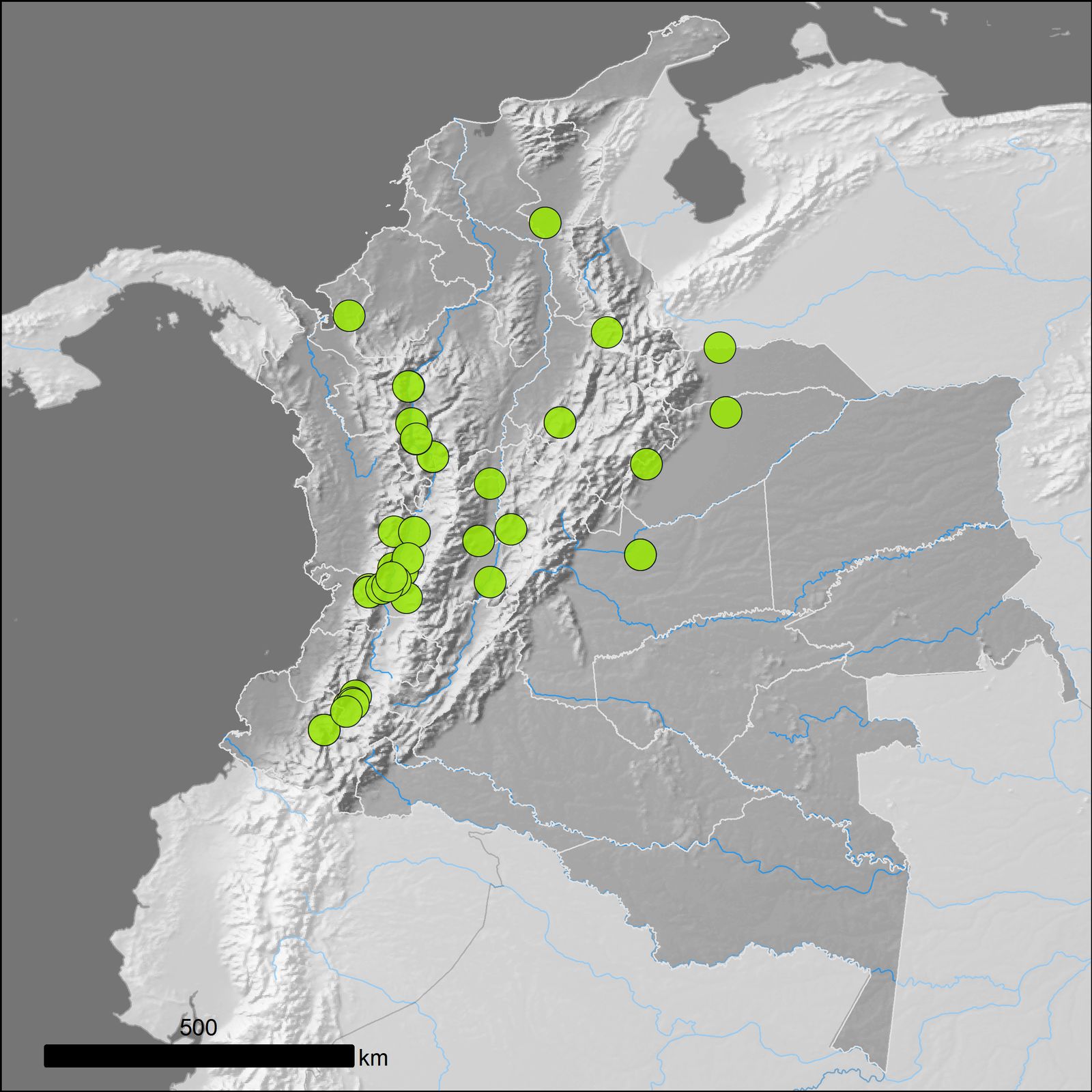Family: Rutaceae
Author: Lam.
Bibliography: Encycl. 2: 39 (1786)
Year: 1786
Status: accepted
Rank: species
Genus: Zanthoxylum
Vegetable: False
Observations: Mexico to Trop. America
Description
Prickly yellow, known scientifically as Zanthoxylum caribaeum, is a plant species belonging to the Rutaceae family. First described in 1786 by the notable botanist Lam., it is chiefly found across Mexico extending into Tropical America. This plant has garnered interest for its adaptive characteristics, thriving in the warm, tropical climates it calls home.
Approximately the size of a large shrub or small tree, Prickly yellow exhibits unique features that make it distinguishable among the diverse flora of its native regions. The branches and trunks of Zanthoxylum caribaeum are notably covered in sharp thorns, a formidable defense mechanism against herbivores. Alongside this protection, the leaves are compound, bearing numerous small leaflets that often release a zesty aroma when crushed, reflective of its membership in the citrus family.
The plant’s vibrant yellow flowers are not just striking visually but also serve an essential role in the local ecosystem. Blooming in clusters, these flowers provide a critical nectar source for various pollinators, including bees and butterflies, thereby supporting biodiversity within their habitat. Following pollination, the plant produces fruit that encapsulates seeds, often used by traditional communities for various purposes.
Culturally and economically, Zanthoxylum caribaeum holds significance among indigenous populations who have utilized different parts of the plant for medicinal practices. Locally, it is acknowledged for its potential therapeutic effects, ranging from alleviating pain to treating digestive issues, aligning with a broader understanding of the Rutaceae family’s medicinal properties.
In studies and documentation, particularly noted in the Encycl. 2: 39 (1786), Prickly yellow has been examined for both its botanical peculiarities and its application within ethnobotany. Researchers and botanists continue to investigate this species, aiming to preserve its habitat while exploring possibilities for broader utilization in sustainable practices and natural product development.
In summary, Zanthoxylum caribaeum, or Prickly yellow, stands out as a resilient and ecologically valuable plant species in tropical America. Its intricate relationship with the environment and traditional medicine underscores the deep-rooted connections between nature and culture.
Common Names
Por: arruda, cera-cozida, espinheiro-preto, limãozinho-preto, maminha-preta, mamiqueira-fedorenta, pau-de-barrão, tabatinga, tamanqueira, cera cozida, guando-do-mato, limãozinho preto, maminha preta
Eng: prickly yellow
En: Prickly yellow
Pt: Arruda, Cera cozida, Espinheiro-preto, Limãozinho preto, Maminha preta, Mamiqueira-fedorenta, Pau-de-barrão, Tabatinga, Tamanqueira, Cera-cozida, Limãozinho-preto, Maminha-preta, Guando-do-mato
Es: Lagartillo.
Synonyms
- Fagara caribaea ((Lam.) Krug & Urb.)
Distribution
- Belize (native)
- Bolivia (native)
- Brazil North (native)
- Brazil Northeast (native)
- Brazil South (native)
- Brazil Southeast (native)
- Brazil West-Central (native)
- Cayman Is. (native)
- Colombia (native)
- Costa Rica (native)
- Cuba (native)
- Dominican Republic (native)
- Ecuador (native)
- El Salvador (native)
- Guatemala (native)
- Guyana (native)
- Haiti (native)
- Honduras (native)
- Jamaica (native)
- Leeward Is. (native)
- Mexico Central (native)
- Mexico Gulf (native)
- Mexico Northeast (native)
- Mexico Northwest (native)
- Mexico Southeast (native)
- Mexico Southwest (native)
- Nicaragua (native)
- Panamá (native)
- Paraguay (native)
- Peru (native)
- Puerto Rico (native)
- Trinidad-Tobago (native)
- Venezuela (native)
- Windward Is. (native)
Additional Images
Leaf
Taken Mar 3, 2022 by Sébastien TRASBOT (cc-by-sa)
Taken Mar 3, 2022 by Sébastien TRASBOT (cc-by-sa)
Taken Mar 3, 2022 by Sébastien TRASBOT (cc-by-sa)
Taken Aug 20, 2021 by Sébastien TRASBOT (cc-by-sa)
Taken Mar 3, 2022 by Sébastien TRASBOT (cc-by-sa)
Bark
Taken Aug 6, 2022 by Walter Diaz (cc-by-sa)
Taken Aug 6, 2022 by Walter Diaz (cc-by-sa)
Taken Jan 25, 2008 by Tela Botanica − Geneviève Botti (cc-by-sa)
Taken Feb 10, 2014 by Tela Botanica − Marcel ETIENNE (cc-by-sa)
Taken Jan 24, 2014 by Tela Botanica − Marcel ETIENNE (cc-by-sa)
Flower
Taken Mar 29, 2022 by Marzanna Bug (cc-by-sa)
Habit
Taken Mar 3, 2022 by Sébastien TRASBOT (cc-by-sa)

© copyright of the Board of Trustees of the Royal Botanic Gardens, Kew.

© copyright of the Board of Trustees of the Royal Botanic Gardens, Kew.
Sources
- WFO (No URL)
- IPNI (No URL)
- GBIF (https://www.gbif.org/species/3190118)
- POWO (http://powo.science.kew.org/taxon/urn:lsid:ipni.org:names:775634-1)
- PlantNet (https://identify.plantnet.org/species/the-plant-list/Zanthoxylum caribaeum Lam.)
Specifications
Growth habit>: Shrub, Tree












